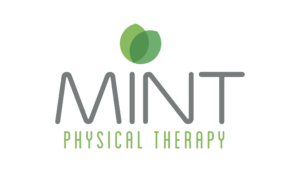
In recent years, dry needling has gained popularity as a highly effective treatment option for musculoskeletal pain and dysfunction. As a physical therapist, I often incorporate dry needling into my treatment plans to help patients achieve optimal recovery and improved quality of life. In this blog post, we’ll explore what dry needling is, how it works, and the many benefits it offers.
What is Dry Needling?
Dry needling is a specialized technique used by physical therapists grounded in modern anatomy and physiology to treat muscle pain and dysfunction. Unlike traditional acupuncture, which is rooted in traditional Eastern medicine and focuses on restoring energy flow (qi) through the body, dry needling targets trigger points within muscles to alleviate pain and improve function.
How Does Dry Needling Work?
During a dry needling session, thin, sterile needles are inserted into trigger points, or areas of tight muscle bands, without the use of any medication or injection (hence the term “dry”). These trigger points are areas of increased sensitivity and tightness that can contribute to pain, dysfunction, and restricted movement. The needles stimulate these trigger points, causing a localized twitch response in the muscle fibers. This twitch response helps to release tension, improve range of motion, increase blood flow, and promote the body’s natural healing process.
Benefits of Dry Needling:
1. Pain Relief: Dry needling is highly effective in reducing muscle pain and discomfort associated with a variety of conditions, including muscle strains, tension headaches, and myofascial pain syndrome.
2. Improved Range of Motion: By releasing tension and restoring proper muscle function, dry needling can help improve mobility and flexibility, allowing individuals to move more freely and with less discomfort.
3. Accelerated Healing: The localized twitch response triggered by dry needling stimulates the release of endorphins and other natural pain-relieving chemicals in the body, promoting faster healing and recovery.
4. Enhanced Performance: Athletes and active individuals often turn to dry needling to address muscle imbalances, improve muscle function, and prevent injuries, ultimately enhancing their athletic performance.
5. Complementary to Other Therapies: Dry needling can be used in conjunction with other physical therapy techniques, such as manual therapy and therapeutic exercise, to optimize treatment outcomes and address underlying musculoskeletal issues comprehensively.
In conclusion, dry needling is a safe, effective, and versatile treatment option for musculoskeletal pain and dysfunction. As a physical therapist, I have witnessed firsthand the transformative effects of dry needling in helping my patients achieve their rehabilitation goals and improve their overall quality of life. If you’re experiencing muscle pain or dysfunction, consider incorporating dry needling into your treatment plan and experience the many benefits it has to offer. Schedule a consultation with a therapist at MINT Physical Therapy today and discover how dry needling is just one of the many ways we can help restore you to MINT condition.